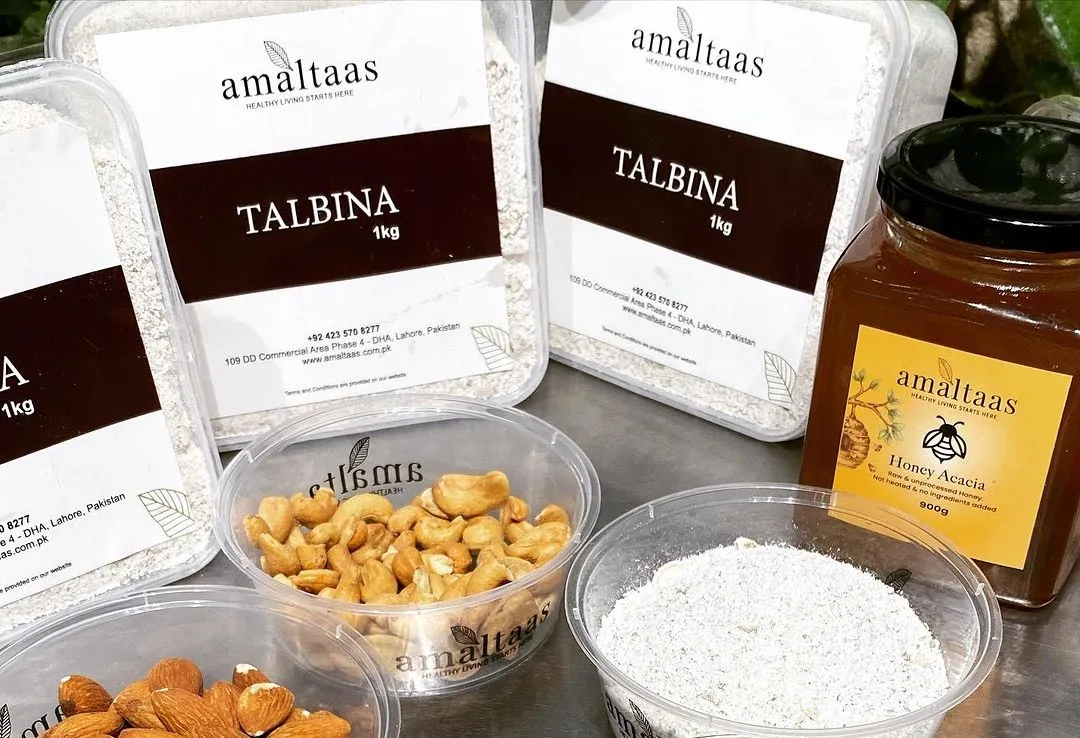How Talbina Nourishes the Soul & Body in Ramadan

When you first hear about Talbina, it might sound like a new superfood trend or an exotic dish yet to hit mainstream menus. But dig a little deeper, and you'll discover a food with roots stretching back through centuries, offering comfort and nourishment to those who consume it.
Made from barley flour, water, and sometimes milk, Talbina is a traditional Arabic dish known for its simplicity and health benefits. So, let’s get into details and find out more about Talbina, a particularly comforting food during Ramadan!
What is Talbina?
Talbina consists of a porridge created from barley flour, water, and honey. Frequently, it is prepared with dates and raisins, referred to in Arabic as "the people of dates." Simply put, Talbina is a barley-based porridge. Its main ingredient, barley, is one of the oldest consumed grains in the world, celebrated for its fiber content and numerous health benefits.
While many might relegate porridge to breakfast, Talbina breaks the mold. It's a versatile dish that can be enjoyed at any time of the day with milk, providing a soothing, easily digestible meal ideal for everyone, especially those with sensitive stomachs (as long as you’re not lactose intolerant) or recovering from illness.
The Roots in Islam and Sunnah
Talbina's significance goes beyond its nutritional value, extending into spiritual realms for those practicing Islam. It is well-regarded in Islamic tradition, where it is consumed to soothe the heart and relieve sadness, following the practices of the Prophet Muhammad (PBUH). The Prophet Mohammad (PBUH) advised consuming Talbina during times of sorrow for its comforting properties and ability to ease grief.
Aisha (RA), the Prophet's wife, often recommended Talbina for the sick, highlighting its therapeutic properties. This historical and religious context enriches Talbina's value making it a dish of both physical nourishment and spiritual comfort.
Health Benefits of Talbina
The benefits of Talbina span various aspects of health, from digestive wellness to mental health support. Let’s explore these in more detail.
Digestive Health
The high fiber content in barley helps promote healthy digestion, preventing constipation and fostering a healthy gut microbiome. The beta-glucans in barley act as prebiotics, stimulating the growth of good bacteria in the gut.
Cardiovascular Health
Regular consumption of Talbina can contribute to better heart health1. Barley’s fiber helps lower cholesterol levels, reducing the risk of heart disease. Additionally, the grain’s low glycemic index assists in blood sugar management2, offering stability to those with diabetes or at risk of developing the condition.
Mental well-being
There’s emerging evidence to suggest that the consumption of Talbina could have a positive impact on mental health, potentially alleviating symptoms of depression3. The comforting quality of a warm, nutritious meal, combined with the physiological benefits of its ingredients, may play a role in this.
Skin and Inflammatory Conditions
The anti-inflammatory properties of barley may also benefit the skin, helping to reduce acne and other skin conditions4. Moreover, the antioxidants present in barley can combat inflammation throughout the body, offering relief from a variety of inflammatory conditions.
Making your own Talbina
Preparing Talbina on your own allows for customization based on personal taste preferences. Here’s a simple recipe:
- Ingredients: 2 tablespoons of barley flour, 1 cup of milk or water, honey (to taste), optional nuts or dried fruits for topping.
- Preparation: Combine barley flour with milk or water in a saucepan. Cook over medium heat for about 5 minutes, stirring frequently to prevent lumps. Sweeten with honey as desired.
- Serving suggestions: Enhance your Talbina with cinnamon or cardamom. Top it with chopped nuts, dried fruits, or date syrup for added texture and flavor.
Choosing Amaltaas Talbina
Selecting Amaltaas Talbina means opting for a product that respects the traditional preparation methods of this nourishing dish. It provides a convenient option for those looking to incorporate Talbina into their diets without compromising on quality.
Whether you're seeking the health benefits associated with barley or following the Sunnah, Amaltaas offers a Talbina that’s both authentic and ready to form part of your Ramadan routine.
To sum up, Talbina endures the wisdom of traditional foods in supporting overall health. Its role in Islamic tradition adds a layer of spiritual significance, making it a dish that nourishes both body and soul.
And for those looking to explore the benefits of Talbina or following the Sunnah, Amaltaas provides a trustworthy and convenient Talbina option, bringing the goodness that’s both authentic and ready to form part of your dietary routine.
References
1. National Library of Medicine. (2021). Perspective on the mechanism of action and potential use of antiviral drugs in the treatment of coronavirus disease 2019. Journal of Microbiology, Immunology and Infection, 54(3), 363–376: https://www.ncbi.nlm.nih.gov/pmc/articles/PMC7827176/
2. Prasetyo, Y. T., Mandasari, D., & Husain, Z. (2021). The effect of consumption of herbal medicines on the occurrence of hypertension in adults. Journal of Traditional and Complementary Medicine, 12(3), 226–233: https://www.sciencedirect.com/science/article/pii/S2475299123153856#:~:text=The%20findings%20of%20this%20study%20showed%20no%20significant,regardless%20of%20the%20key%20ingredients%20of%20their%20meals
3. Elnasri, H. A., & Bazeed, M. A. (2007). The effects of dietary supplements on the development of macular edema in diabetic patients. Journal of Medical Sciences, 7(1), 81–87: https://scialert.net/fulltext/?doi=jms.2007.81.87#:~:text=The%20use%20of%20high%20dietary,of%20clinically%20significant%20macular%20edema
4. Gunnars, K. (2022). Honey and Milk: Benefits and Potential Risks. Healthline Media: https://www.healthline.com/nutrition/honey-and-milk#:~:text=Could%20promote%20heart%20health,to%20protect%20against%20heart%20disease




